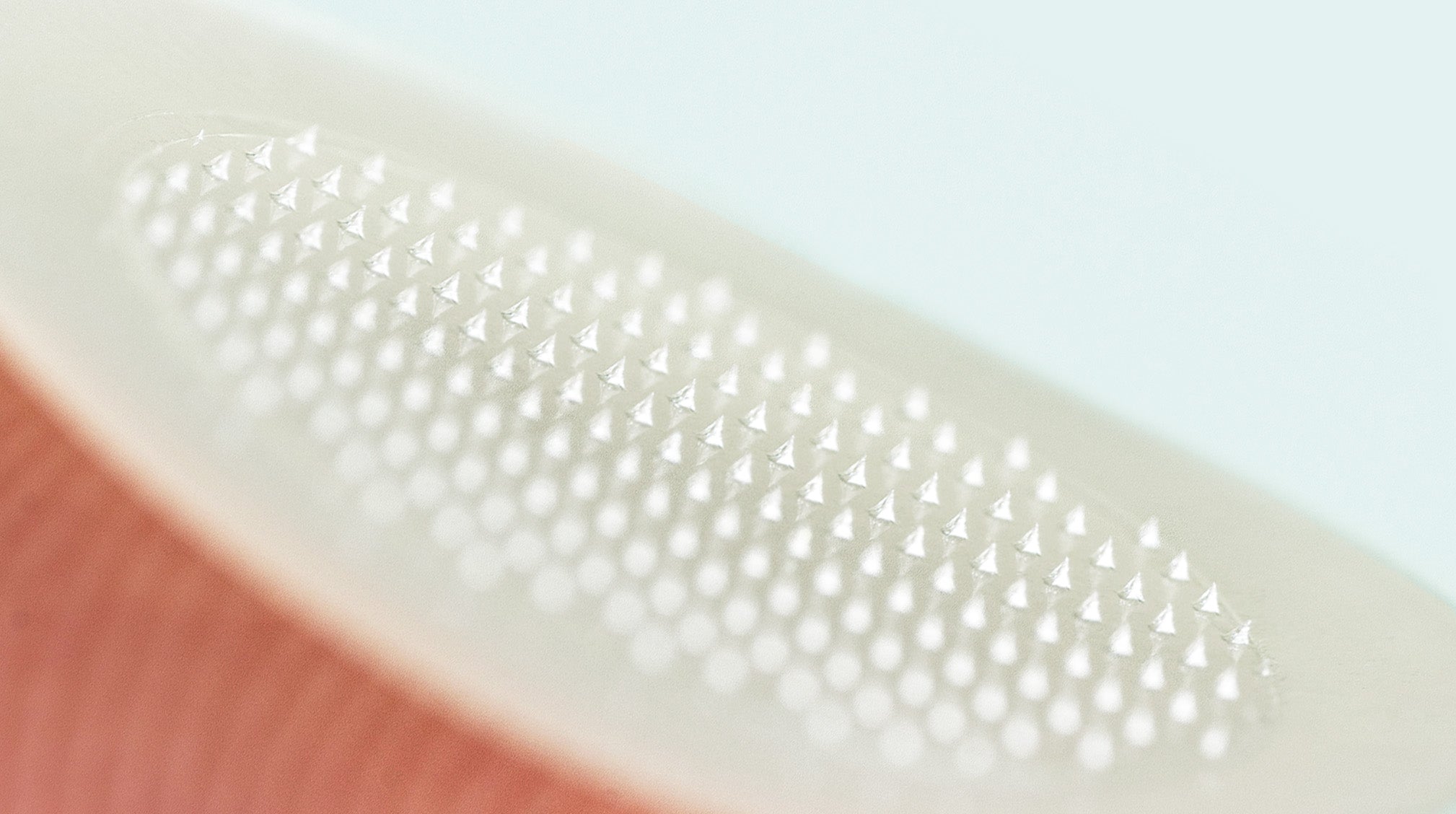
Bottom line: Cortisone Shot vs. Micropoint
Cortisone for acne can be a lifesaver (or rather, face-saver) in three situations:
- You’ve had a huge, under-the-skin pimple for months and it just won’t quit.
- An enormous blind zit is super-inflamed and causing you a lot of pain.
- You have an incredibly important event coming up and need to get rid of a cystic breakout ASAP.
In all other situations, give Micropoint a try. It’s a safe, affordable, at-home alternative that can get the job done when it comes to early-stage, under-the-skin pimples.
And if cystic acne is a recurring issue, consult your dermatologist. Not for round-the-clock cortisone shots, but for an action plan that will address the root cause of your breakouts.
What are cortisone shots for acne?
During a cortisone shot or "steroid-shot", a dermatologist will inject a synthetic hormone related to the stress hormone cortisol directly into a deep, cystic pimple. “Intralesional triamcinolone (commonly known as cortisone) is an anti-inflammatory medication that is injected to decrease inflammation in the skin,” explains Dr. Juliya Fisher, an NYC-based, board-certified dermatologist. “Cortisone injections are an excellent way to calm down the inflammation of a deep, painful pimple. They can speed up the resolution of these painful bumps and are especially valuable if a pimple pops up before an important event!”

Ouch factors: How does it feel? How much does it cost?
If the thought of a vaccine-size needle poking into your chin makes you cringe, fear not. The needle used for cortisone injections is actually a microneedle, and not much larger than an acupuncture needle.
“The procedure is fairly quick (within minutes) and may be tender with a feeling of increased pressure during and immediately after the procedure because you are injecting a substance into a small area,” says Dr. Rina Allawh, a board-certified dermatologist practicing in the Philadelphia area. “However, within a few minutes, you will feel relief and the swelling, redness and tenderness of the cystic acne will improve over the next 24 hours.”
Some insurance plans will cover (or partially cover) the cost of cystic acne injections, but if yours doesn’t, they typically run between $50 to $100 per shot, depending on where you live. Of course, if you are looking to get rid of a big honking cyst that popped up right before your wedding, that’s a small price to pay. But if you start heading to the derm for an injection every few weeks, the cost can really add up.
RELATED READ: How is Hydrocortisone Used for Acne?
Words of warning
So... now that you know about this miracle acne injection, what are side effects? One thing almost all dermatologists agree about? Cortisone injections are not meant to be a regular acne treatment. “In general, cortisone injections are not an initial treatment, but often deemed by dermatologists as the last resort for persistent cystic acne,” says Allawh.
The almost-immediate relief of a cortisone shot is not without risk. The most common side effect is skin atrophy, which results in marks that look like pits or dents in the skin. This can occur if a dermatologist uses too much cortisone or too strong a dilution. The dents may go away on their own, but can sometimes be permanent. For people with medium to dark complexions, cortisone shots can also leave a light spot on the skin, called hypopigmentation, which typically fades over time.

Micropoint for Blemishes: a cortisone shot alternative?
We often receive DMs asking whether Micropoint is like a cortisone shot at home. The answer is yes … and no. Both treatments target and heal blind zits – the kind that are under your skin but don’t have a visible head. Instead of a needle at the derm’s office, Micropoint has 173 teeny-tiny hyaluronic microneedles that gently penetrate the skin and dissolve powerful ingredients straight into the source of a pimple.
And instead of steroids, Micropoint uses salicylic acid, beta-glucan and sodium hyaluronate, all of which are safe for regular use (and don’t put your skin at risk of pitting and light spots). To attack blind pimples without damaging your skin, salicylic acid exfoliates dead skin cells, beta-glucan soothes irritation and hyaluronic acid replenishes lost hydration.
Micropoint works best in the early stage of a blind zit – when you can feel a pimple under your skin, but it’s not too visible or painful just yet. Basically, you no longer need to wait around for a pimple to get bigger and come to a head. You can speed up the lifecycle of a breakout and even stop it short if you catch the pimple very early in its journey.
[[product-ad]]
The information provided in this article is for general knowledge and informational purposes only and does not constitute medical advice. It is not intended to be a substitute for professional medical advice, diagnosis, or treatment. Always seek the advice of a qualified healthcare provider with any questions you may have regarding a medical condition.











